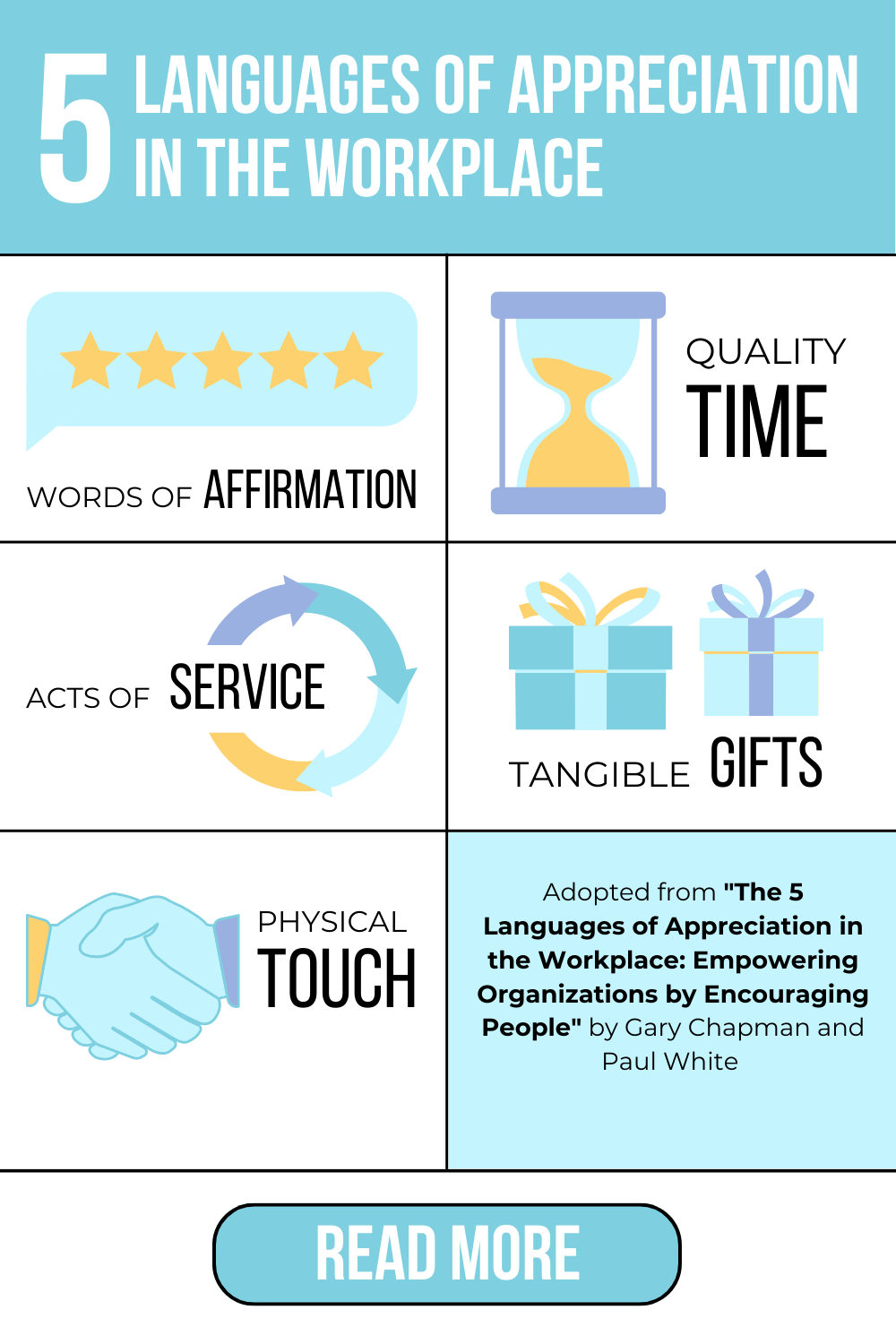In the intricate tapestry of the workplace, amid deadlines, meetings, and the relentless ebb and flow of projects, appreciation can often seem like a fleeting shadow—often overlooked yet immensely powerful. Just as a garden flourishes with the right mix of sunlight, water, and care, cultivating an environment rich in appreciation doesn’t only contribute to individual satisfaction but can propel an entire organization to new heights. Central to this nurturing is the concept of the Five Languages of Appreciation, a framework that delineates how individuals perceive gratitude and recognition in their professional sphere.
To navigate the complex landscape of workplace dynamics, understanding these languages can be akin to possessing a key that unlocks the hearts and minds of colleagues. Each language is uniquely appealing, offering distinct ways to express and receive appreciation that resonate deeply and foster a culture of positivity.
The First Language: Words of Affirmation
Imagine standing on the shore, where the sound of the waves and the gentle breeze create a symphony of nature. Words of affirmation are like that soothing sound, enveloping colleagues in warmth and encouragement. This first language involves expressing genuine compliments and encouragement verbally or in written form. A heartfelt “thank you” can lift spirits, while a few kind words can ignite motivation within even the most jaded employee. Consider how a simple note or a shout-out during a team meeting can transform the atmosphere—words have immense power. They serve as verbal bouquets, blooming into an environment where employees feel valued.
Crafting personalized messages enhances their impact. Acknowledging specific contributions not only makes the appreciation feel sincere but also reinforces the desired behavior. When individuals feel recognized for their efforts, they tend to replicate those behaviors, cultivating a cycle of positivity.
The Second Language: Quality Time
Just as a gardener spends time observing the nuances of their plants, so too do we cultivate relationships through quality time. This language isn’t merely about spending time together; it is about fostering deeper connections. In a fast-paced work environment, one-on-one meetings and informal catch-ups provide spaces for dialogue that can build trust and understanding.
Employees flourish when their leaders dedicate uninterrupted time to listen and engage. This investment in quality time can unveil valuable insights and innovative ideas that may otherwise remain dormant. When leaders show genuine interest in their employees’ thoughts and aspirations, they create an oasis of trust, where collaboration thrives.
The Third Language: Acts of Service
Acts of service can be likened to the gentle rain nourishing a parched landscape. When team members go out of their way to assist each other—be it through offering help with a demanding project or pitching in during crunch time—these actions serve as powerful demonstrations of appreciation. Such gestures illuminate a culture of teamwork and camaraderie.
This language emphasizes the importance of taking action to show support. It shifts the focus from mere words to tangible contributions, reinforcing the idea that teamwork is essential for success. A colleague who stays late to help a teammate meet a deadline, for example, embodies the essence of this language. When employees recognize their efforts are supported through action, it fosters an unwavering sense of belonging and loyalty.
The Fourth Language: Tangible Gifts
Gift-giving in the workplace may evoke images of major holidays or company celebrations, but the essence of this language extends far beyond the formalities. Tangible gifts can range from a handwritten note to a well-thought-out token of appreciation, demonstrating understanding and acknowledgment of an individual’s preferences. Such gestures, no matter how small, are like the surprise blooms of wildflowers that brighten the landscape unexpectedly.
Whether it’s sharing a book that resonates with a colleague’s interests or celebrating a milestone with a small gift, these acts convey that one is seen and valued. The thoughtfulness behind the gift matters more than the item’s monetary value; it creates lasting memories and reinforces personal connections among co-workers. Here, appreciation becomes a delightful exchange, turning the workplace into a joyful arena.
The Fifth Language: Physical Touch
The final language—physical touch—might seem ambiguous within the confines of professional etiquette, yet it holds considerable weight. A celebratory high-five, a reassuring pat on the back, or a friendly handshake can convey warmth and camaraderie, enriching the overall workplace atmosphere. Physical touch is akin to the sun’s rays, providing light and warmth, and can transcend words and actions when appropriately utilized.
Nevertheless, it’s crucial to navigate this language with sensitivity, considering personal boundaries and cultural differences. When applied thoughtfully, positive physical interactions can cultivate a spirit of unity and bolster morale, fostering a workplace where individuals feel deeply connected.
Embracing the Spectrum of Appreciation
By recognizing and embracing these five languages, organizations can orchestrate a symphony of appreciation that reverberates through every level. Each unique language adds a rich texture to the workplace culture, promoting an environment where individuals feel valued and motivated. Whether it’s through words, time, actions, gifts, or touch, appreciation acts as a catalyst for engagement, innovation, and ultimately, success.
The power of appreciation in action lies not only in the initial expression but in the ripple effects it creates. As employees feel recognized and valued, their dedication to their work intensifies, fostering a harmonious and productive workplace. Just as a well-tended garden thrives with rich soil and careful attention, so too can a workplace flourish when appreciation is woven into the very fabric of its culture. By becoming attuned to the diverse languages of appreciation, leaders can sow the seeds of lasting motivation and loyalty among their teams, reaping a bountiful harvest of success.
